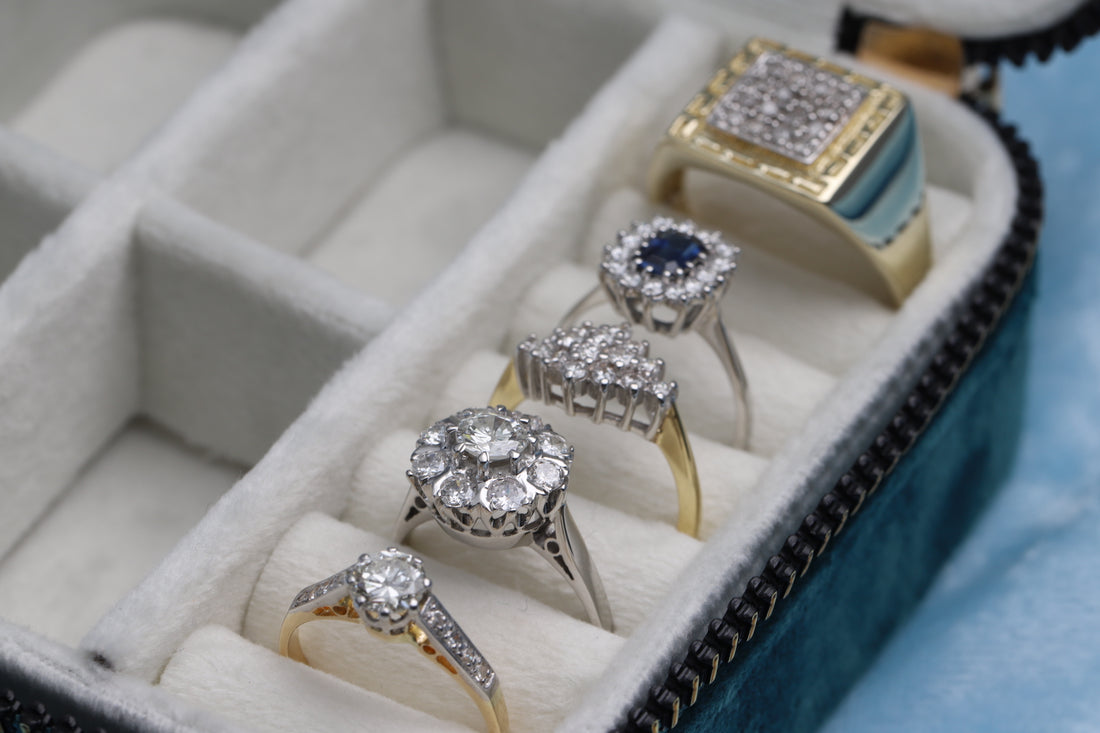
A Journey Through Time: The Fascinating History of Diamonds and Their Rise to Popularity
With Diamond Day this month, we thought we’d give you a history on the world’s most precious stone! Diamonds, often called "a girl's best friend," have captivated humanity for centuries with their unparalleled beauty and rarity. These precious gems have a rich and storied history, evolving from mystical talismans to the ultimate symbol of love and luxury. At Gold Reserves, we appreciate the deep allure and significance of diamonds. In this blog, we'll take you on a journey through the history of diamonds, exploring how they rose to global prominence and became the treasured gemstones we know today.
Ancient Beginnings: The Early Mystique of Diamonds
The story of diamonds begins in ancient India, where they were first discovered in riverbeds around 2,500 years ago. Indian culture regarded diamonds as precious stones with magical properties, believed to protect against evil and bring good fortune. They were often used as religious icons and adorned the wealthy and powerful. The word "diamond" itself comes from the Greek word "adamas," meaning "unconquerable" or "invincible," reflecting the gemstone's unmatched hardness.
For centuries, India remained the primary source of diamonds, supplying them to both Eastern and Western markets. These early diamonds were prized for their ability to refract light and their rarity, making them symbols of status and power.
Diamonds in Antiquity and the Middle Ages
During antiquity, diamonds began to make their way into Europe through trade routes. The gems were primarily used by the elite for adornment and as talismans. However, it wasn't until the Middle Ages that diamonds started to gain wider recognition in Europe. The introduction of faceting techniques in the 14th century significantly enhanced the brilliance of diamonds, making them even more desirable.
The use of diamonds in jewellery became more prominent, particularly among royalty and the aristocracy. The famous Koh-i-Noor diamond, discovered in India, became a notable symbol of power and wealth, passing through the hands of various rulers. This period also saw the emergence of diamonds in heraldic and ceremonial contexts, further cementing their status as objects of prestige.
The Discovery of New Diamond Sources: Expanding the Market
The global diamond market underwent a significant transformation in the 18th and 19th centuries. The discovery of new diamond deposits in Brazil in the early 1700s marked the end of India's monopoly on the gemstone. However, it was the discovery of vast diamond reserves in South Africa in the late 19th century that truly revolutionised the industry.
The South African diamond rush began with the discovery of the Eureka Diamond in 1866, followed by the more significant finding of the Star of South Africa. These discoveries attracted international attention and led to the establishment of large-scale mining operations. The De Beers Consolidated Mines, founded by Cecil Rhodes in 1888, became a dominant force in the diamond industry, controlling the supply and influencing global diamond markets.
The Modern Era: Diamonds as a Symbol of Love
The early 20th century marked a pivotal moment in the history of diamonds, thanks largely to the efforts of the De Beers company. In the 1930s, De Beers launched an unprecedented marketing campaign to revive the diamond market during the Great Depression. The slogan "A Diamond is Forever," coined in 1947, became one of the most successful advertising lines in history. It positioned diamonds as the ultimate symbol of eternal love and commitment, solidifying their association with engagement rings.
This marketing campaign had a profound impact on consumer behavior, establishing the tradition of diamond engagement rings that continues to this day. Diamonds were no longer just luxury items for the wealthy; they became an integral part of mainstream culture, representing the ideal expression of romantic love.
The Rise of Ethical and Sustainable Diamonds
In recent decades, the diamond industry has faced scrutiny over issues such as conflict diamonds, also known as "blood diamonds," which are sold to fund armed conflict. In response, the Kimberley Process was established in 2003 to prevent the flow of conflict diamonds into the global market. This initiative, along with increasing consumer awareness, has driven the demand for ethically sourced and sustainable diamonds.
The development of lab-grown diamonds offers another alternative for consumers concerned about ethical and environmental issues. These diamonds, produced in controlled environments using advanced technology, are chemically and physically identical to natural diamonds. They provide a sustainable and conflict-free option, broadening the choices available to consumers.
The Timeless Appeal of Diamonds
The journey of diamonds from ancient Indian riverbeds to the glittering displays of modern jewellery stores is a story of fascination, transformation, and cultural significance. Today, diamonds are cherished not only for their beauty and durability but also for their deep symbolism. They continue to captivate people worldwide, whether as a romantic gesture, a fashion statement, or an investment.
At Gold Reserves, we celebrate the rich history and enduring appeal of diamonds. Our collection features a wide range of new and pre-owned diamond jewellery, each with its own unique story and allure. We invite you to explore our selection and discover the perfect diamond to mark your own special moments. After all, a diamond is not just a gemstone; it’s a timeless piece of history and a symbol of love that will last forever.





